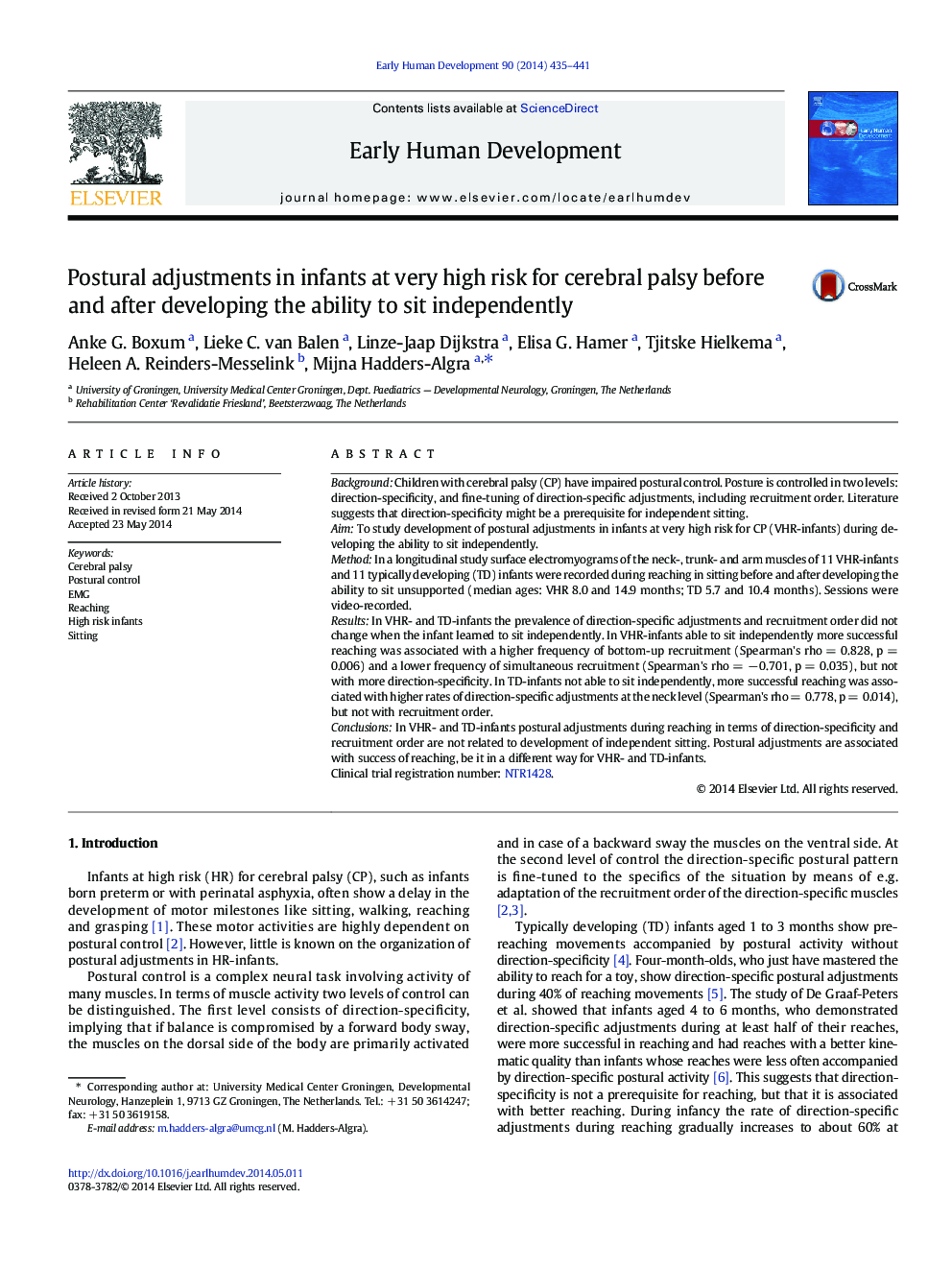| Article ID | Journal | Published Year | Pages | File Type |
|---|---|---|---|---|
| 3916504 | Early Human Development | 2014 | 7 Pages |
•Direction-specificity does not change during the development of independent sitting.•Postural activity and reaching success differentially related in TD and VHR-infants.•In non-sitting TD-infants direction-specificity related to reach success.•In sitting VHR-infants postural muscle recruitment order related to reach success.
BackgroundChildren with cerebral palsy (CP) have impaired postural control. Posture is controlled in two levels: direction-specificity, and fine-tuning of direction-specific adjustments, including recruitment order. Literature suggests that direction-specificity might be a prerequisite for independent sitting.AimTo study development of postural adjustments in infants at very high risk for CP (VHR-infants) during developing the ability to sit independently.MethodIn a longitudinal study surface electromyograms of the neck-, trunk- and arm muscles of 11 VHR-infants and 11 typically developing (TD) infants were recorded during reaching in sitting before and after developing the ability to sit unsupported (median ages: VHR 8.0 and 14.9 months; TD 5.7 and 10.4 months). Sessions were video-recorded.ResultsIn VHR- and TD-infants the prevalence of direction-specific adjustments and recruitment order did not change when the infant learned to sit independently. In VHR-infants able to sit independently more successful reaching was associated with a higher frequency of bottom-up recruitment (Spearman's rho = 0.828, p = 0.006) and a lower frequency of simultaneous recruitment (Spearman's rho = − 0.701, p = 0.035), but not with more direction-specificity. In TD-infants not able to sit independently, more successful reaching was associated with higher rates of direction-specific adjustments at the neck level (Spearman's rho = 0.778, p = 0.014), but not with recruitment order.ConclusionsIn VHR- and TD-infants postural adjustments during reaching in terms of direction-specificity and recruitment order are not related to development of independent sitting. Postural adjustments are associated with success of reaching, be it in a different way for VHR- and TD-infants.Clinical trial registration number: NTR1428.
